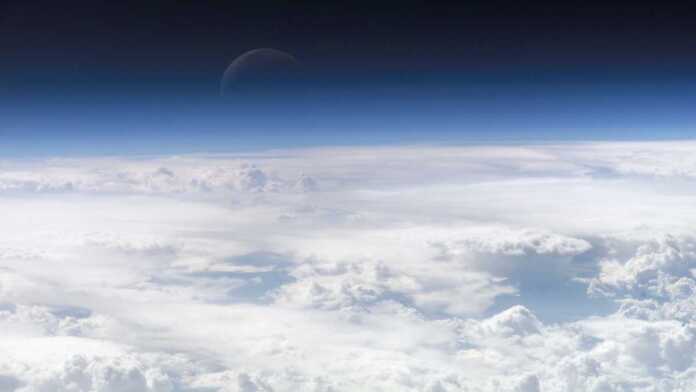Global climate models, thanks to the advances accumulated after successive investigations, coincide in a long list of consequences generated by the accumulation of gases in the Earth’s atmosphere, mainly linked to increases in temperature, which in exacerbated cases can lead to an increase sea level and in more extreme heat waves.
Despite these scientific certainties, there are other elements linked to this same factor that are still difficult for science to address. An example of this is the lack of consensus on how rainfall patterns evolve as the planet increases in average temperature, as well as how different the frequency of storms, droughts or snowfalls will be in the long term. Through the use of artificial intelligence, a greater approximation to these predictions could be generated.
Long-term weather projections, refined by AI
Unlike gravitational waves, which distort the fabric of space-time, gravitational waves arise when air is pushed up by wind blowing over, say, a thunderstorm or a mountain. After being thrown higher and thinner in the atmosphere, the air falls back under the force of gravity, then rises again like a cork out of water.
Any given bundle of air can rise and fall for a few minutes or many hours, carrying momentum as it goes. Eventually, the wave spreads up and out until it breaks in the middle and upper atmosphere like an ocean wave breaking on a beach.
Atmospheric scientists have long known that gravitational waves help drive the general circulation of the atmosphere and influence the paths of storms and the polar vortex. This manifests itself when the swirl of cold air located near the Earth’s poles unusually wobbles, bringing extreme winter weather to parts of North America, Europe and Asia.
Gravitational waves are too small and short-lived to be considered and appear in models designed to cover meteorological analysis of the entire planet, as if it were a low-resolution photograph. Models with greater capabilities, on the other hand, can provide greater details, but with a high implementation cost and limited projection capacity over time.
For now, smaller-scale processes, such as gravitational waves, are dealt with superficially, without big calculations. To do this, scientists use simplified equations known as “parametrizations,” which are based on physics but do not calculate the oscillations and interactions of individual waves or incorporate the limited observational data available, almost like “guessing.” ”.
The complication of this methodology is that a tiny inaccuracy in its parameterizations can give rise to projections that are very different from each other. For this reason, an adjustment mechanism used in these cases is the approximation of these parameterizations towards projections consistent with the state of recent weather.
Aditi Sheshadri, an assistant professor of Earth system sciences at Stanford University, along with Zachary Espinosa, her former graduate student, are among a growing number of scientists who, through artificial intelligence and machine learning, They look for a possible solution. “Parameterizations are a big computational sink for climate models, so if we can speed them up, that means we can increase the resolution of all sorts of things.”Espinosa commented.
The aforementioned research team developed an AI-driven model, called WaveNet, that can accurately emulate how dissipating gravitational waves speed up and slow down atmospheric winds.
In this project contemporary and old technologies coexist, but in full force. The construction and training of the set of artificial neural networks used was done using the Python programming language. This infrastructure was then coupled to a classic global climate model, built decades ago, in a language from the 1950s, called Fortran.
With only one year of data processed in their training, their predictions of how gravitational waves would respond to extremely high CO2 concentrations over 800 years were similar to those produced by conventional parameterizations.
Another achievement was recorded based on a single phase of data, when a full two-phase cycle of the Near Biennial Oscillation, a regular reversal of winds running far above the equator that affects surface weather and climate, was accurately simulated. ozone depletion, and is driven by the breakdown of gravitational waves.
“WaveNet doesn’t really tell us anything new about the gravitational wave response to CO2. It is simply doing what conventional gravitational wave parameterization would have done in response to C2, at least for now.”Sheshadri said.
The possibility of representing gravitational waves with this level of effectiveness is of great value for the study of climate and weather projections. “Those are the kinds of things that we ultimately wish we could be a lot more confident in.”Sheshadri said, alluding to the uncertainty hampering efforts to safeguard water supplies, food production, infrastructure and people from future climate shocks.












